
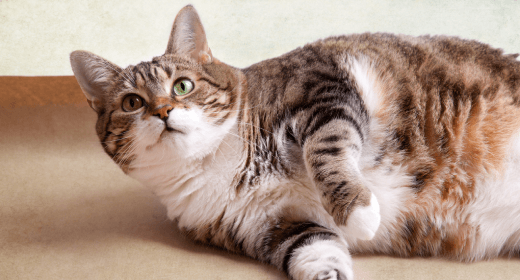
Let’s start by asking – would you realize if your cat needed to cut down?
You know your cat is purr-fect. It’s fluffy and has a paunchy belly. But so, what? It could also imply that it is perfectly healthy. Naturally, you may not understand if your fluffball is on the portly side. In fact, overweight cats now appear to outnumber those who have a healthy weight.
Overfeeding your cat is a big no-no. Even a few additional pounds can increase your cat’s risk of developing certain health conditions, such as type 2 diabetes. It may even prevent your cat from grooming itself properly. Therefore, keeping your cat in shape is crucial to maintain its health, and help it live longer and happier. Well, the good news is that by making some simple dietary and exercise changes, you can assist your overweight cat in losing weight.
Obesity is becoming more prevalent in cats, just as it is in humans. It can have long-term consequences on a cat's health, quality of life, and body functioning. Therefore, obesity in cats must be addressed immediately, as it is linked to serious health problems. Here are the risks of cat obesity:
When your cat becomes overweight, its immune system gets weakened, leaving it more susceptible to infection. This includes urinary infection as well as 'stones,' which are caused in overweight cats because they’re less active, drink less water, and urinate lesser than healthy cats.
Around 80% to 90% of obese cats require daily insulin shots as they are more likely to develop diabetes. But, when their excess weight is eliminated, diabetes can often be reversed.
When your cat’s body senses that it is undernourished, for instance, if a regular food supply is interrupted, the fat is moved from reserves into the liver to be used as energy. But a cat’s body is unable to efficiently control this process, resulting in poor liver function and liver failure.
Cats with excess weight have a harder time grooming themselves, which can contribute to skin problems.
Here is a chart for you to understand better –

After you get your overweight cat in shape, your goal must be to maintain it for its good health and longevity. Here are some things you should avoid doing to keep your cat from becoming overweight:
You should avoid free -feeding your cat to prevent it from becoming obese. Set up definite feeding times and keep treats to a minimum.
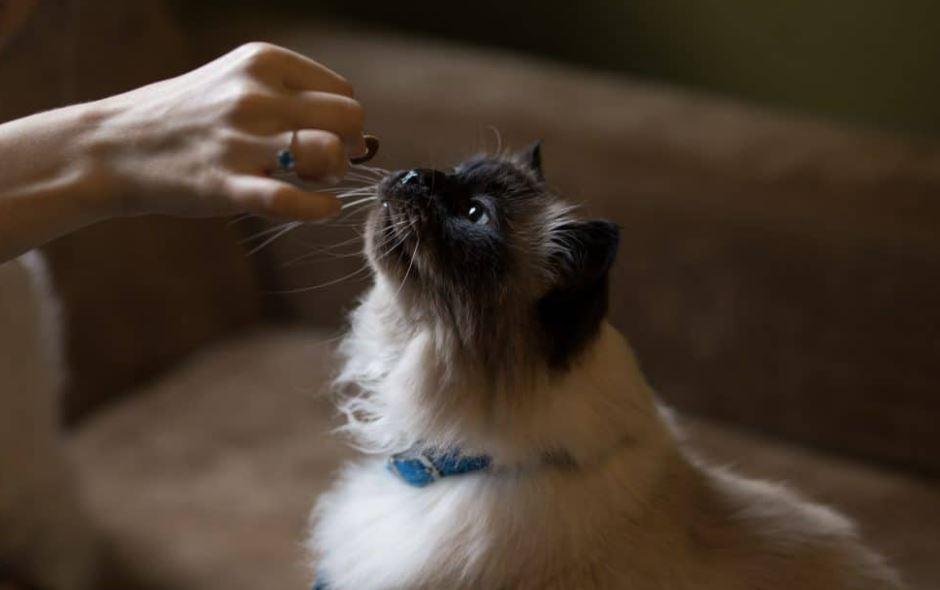
Your cat is at even more risk of becoming overweight if it does not engage in any outdoor activity. To avoid boredom and prevent weight gain, find some interesting toys, set aside playtime, and make it a priority for your indoor cat. Another approach is to go for a walk outside with your cat on a leash.
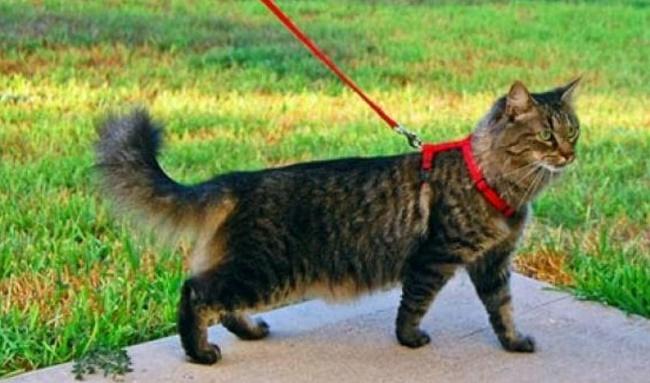
Assess how much cat food your cat truly needs with the advice of your vet, based on your cat's activity level and desired weight. Once you've calculated how much food your cat requires, measure the food for each meal. Remember that cats are little, and while the portion may appear small to you, some extra kibbles can make the difference between maintaining weight and gaining weight.
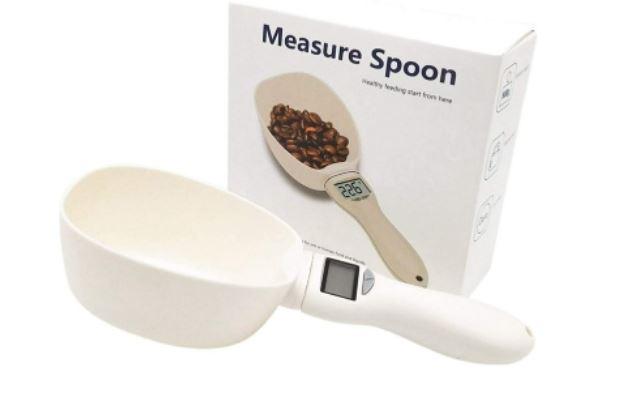
Another way to help your cat lose weight is to increase her activity. Provide cat 'trees' for climbing or teach your cat to play fetch. Buy or create your own toys that encourage exercise. Many cats enjoy chasing lights from pointers or flashlights. One ingenious owner throws her cat's dry food ration a piece at a time! Many cats enjoy learning to walk on a leash. You also can use your cat's natural hunting instinct to help her lose weight. Hide several small portions of her daily food ration around the house. If you have a multi-level home, make your cat use the stairs. Use your imagination but be cautious. Don't let a fat cat get exhausted, overheated, or out of breath. Also, keep in mind that an old cat may not be able to exercise vigorously.
Use playtime, grooming, stroking, or conversation as rewards instead of food treats. If you cannot resist the fat cat who begs for food at the dinner table, remove the cat during dinnertime. If you have a multi-cat household, the consistent winner of the food competition sweepstakes is often obese. If this is the case, separate the cats at mealtimes if possible.
Obesity is easier to prevent than to cure, but it is never too late to reverse it—though it requires long-term patience and commitment. Helping cats lose weight is a slow process. If the amount they eat is severely restricted, the cat risks other health problems.
Increased activity, behavior modification (for both you and your cat), and calorie restriction are your weapons against feline obesity. However, with all these things, it is important to expect a few setbacks and plateaus. It will take at least four months for an obese cat to lose 15% of her starting weight. At that point, have another look at your cat's body condition and go on from there.
Always check with your veterinarian first.
Eliminate all food treats.
Divide the daily food portion into several smaller meals.
Feed a diet formulated specifically for weight loss.
Weigh your cat every two weeks.
Cats should not lose more than 1% to 1.5% of initial weight per week.
Be patient and consistent!
The symptoms are:
You can treat an obese cat by helping it consume fewer calories. But before that, please consult your vet and understand the amount of weight your cat needs to shed. Also, pair some exercises along with the weight loss diet.
Obesity in cats is often linked to physical inactivity, overfeeding, long sleeping times, and indoor confinement.
You should provide canned food to your cat to help it lose weight. Cats prefer wet food to dry food, which is one of the reasons canned diet foods perform better.
If your cat is overweight, it is more likely to develop heart disease, cancer, diabetes, and high blood pressure. Excess fat has a negative effect on a cat's health and lifespan. Extra weight also puts strain on your cat's joints, which can lead to arthritis.

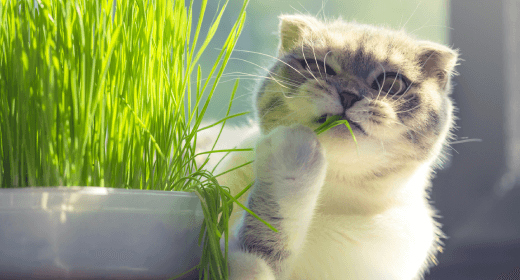
fibre is a vital component in a cat's diet, categorised as soluble and insoluble. Soluble fibre, dissolving in water, regulates blood sugar and lowers cholesterol, while insoluble fibre adds bulk, aiding in digestive movement. Crucially, fibre remains undigested, with some types fermenting to produce short-chain fatty acids (SCFA). These SCFAs serve as a key energy source for the cells lining the intestinal tract, fostering a healthy gut environment. fibre for cats also promotes weight management by inducing a sense of fullness, preventing overeating.
Balancing fibre in cat food is crucial, as excess may lead to nutrient malabsorption. Monitoring fibre types and amounts is vital for optimal feline health, ensuring digestive regularity. Striking this balance supports longevity and vitality in cats, making fibre an indispensable element in their overall well-being.
Today, people are more aware of fibre and its role in their diet. Studies showing the beneficial effects of higher fibre levels in humans influence the way many people think about their own food and that of their pets. Some manufacturers now apply the recommendations of human nutritionists and make high-fibre diets for cats, but cats have a much shorter digestive tract than we do. And unlike humans, cats are carnivorous, so their nutritional needs are better satisfied with meat rather than plant matter. Therefore, cats have different dietary needs than humans. For more than 60 years, companion animal nutritionists at IAMS™ have been studying diets to meet the special nutritional needs of cats.
The feline microbiome constitutes a diverse community of microorganisms, residing predominantly in the gastrointestinal tract. This intricate system of bacteria, viruses, and fungi significantly impacts a cat's health. It plays a crucial role in digestion, influencing nutrient absorption, supporting immune function, and even affecting behavioural patterns. The delicate balance within the microbiome is essential for the overall well-being of the cat, making it a key focus in understanding and optimising feline health.
When it comes to feline nutrition and gut health, the impact of fibrous foods on a cat's microbiome is driven by processes essential for maintaining gastrointestinal balance. Listed below are some interactions and their impact on your cat:
When cats consume fibrous foods, their gut microbiome undergoes a dynamic response, adapting to the influx of indigestible fibres.
Certain fibres for cats function as prebiotics, fostering the growth and activity of beneficial bacteria, such as Bifidobacteria and Lactobacillus, which are essential for gut health.
fibre fermentation by gut bacteria results in the production of short-chain fatty acids (SCFAs), including acetate, propionate, and butyrate.
SCFAs play a pivotal role in nourishing the cells lining the intestinal tract, contributing to mucosal integrity, nutrient absorption, and overall gut function.
fibre-induced fermentation also produces gases and by-products, influencing the pH of the gut environment, creating an environment that discourages harmful pathogens.
IAMS Company research shows the optimal crude fibre level for healthy cat’s ranges from 1.4% to 3.5%. At these levels, nutrient breakdown is maximised. In unique situations, such as hairballs, higher fibre levels may be beneficial.
An important characteristic of fibre is its fermentability, or how well it can be broken down by bacteria in the intestine. This breakdown produces short-chain fatty acids, which provide energy to the intestines. fibre varies in fermentability. fibre sources used in pet foods include cellulose, which is poorly fermentable; beet pulp, which is moderately fermentable; and gums and pectin, which can be highly fermentable. Research has shown that moderate levels of moderately fermentable fibre, such as beet pulp, provide the benefits of energy for the intestinal lining and bulk, without the negative effects of excessive stool or gas and, therefore, are beneficial in cat diets.
Incorporating high-fibre cat food into your feline’s diet offers various health benefits, contributing to their overall well-being. Here is a breakdown of the advantages and how they positively impact feline health:
High-fibre cat food promotes optimal digestive regularity in cats by adding bulk to the stool. This helps prevent issues such as constipation and ensures smoother bowel movements, contributing to overall gastrointestinal health.
The inclusion of fibre in cat food provides a feeling of fullness without adding excessive calories. This can be beneficial for weight management, as it reduces the likelihood of overeating and helps control calorie intake, supporting healthy body weight.
Increased fibre intake aids in controlling and reducing hairballs in cats. The fibrous content helps bind hair together, facilitating its passage through the digestive tract and minimising the risk of hairball-related issues.
fibre-rich cat food diets play a crucial role in managing diabetes in cats. The slow digestion and absorption of carbohydrates associated with increased fibre can help regulate blood sugar levels, providing better glucose control for diabetic cats.
Soluble fibre for cats, found in high-fibre foods, has cholesterol-lowering properties. By binding to cholesterol molecules and promoting their excretion, soluble fibre contributes to maintaining healthy cholesterol levels, supporting cardiovascular well-being in cats.
High-fibre diets are often recommended for cats with specific medical conditions, such as obesity, diabetes, or certain gastrointestinal disorders. The advantages of fibre, including weight management and blood sugar regulation, make it a valuable component in the overall treatment and management of these conditions.
While low-fibre cat food is recommended in certain cases, it is essential for cat parents to be aware of potential drawbacks that can impact their feline companion's health and well-being.
A diet low in fibre may contribute to constipation issues in cats as it lacks the bulk necessary for proper bowel movement regulation. This can result in discomfort for the cat and potential complications if not addressed promptly.
Low-fibre foods might compromise the overall efficiency of the cat's digestive system, potentially leading to inadequate nutrient absorption. This could impact the cat's overall health and vitality, making it crucial to monitor its digestive well-being.
While low-fibre diets are often associated with weight loss, they may also pose a risk of obesity if not carefully monitored. Cats might consume more to compensate for the reduced caloric content, emphasising the need for vigilance in managing portion sizes.
Cats on a consistently low-fibre diet may face challenges in obtaining a balanced array of essential nutrients, potentially leading to nutritional imbalances and health issues.
Being aware of these potential downsides helps cat parents make informed decisions about their feline’s diet, promoting overall feline well-being.
When choosing a pet food, fibre is an important consideration, but remember that the needs of cats are not the same as those of humans. A moderate level of moderately fermentable fibre, such as beet pulp, provides proven nutritional benefits for cats. Cat diets containing high levels of poorly fermentable fibre dilute calories and deprive cats of the nutrients they need.
All IAMS products are made with levels of moderately fermentable fibre needed to promote intestinal health. And all IAMS foods, such as IAMS ProActive Health™ Adult Original with Chicken, contain the moderately fermentable fibre system, which is the exclusive property of IAMS Company and is protected by U.S. Patent No. 5,616,569 for Pet Food Products Containing Fermentable fibres and Process for Treating Gastrointestinal Disorders.
Ensuring your feline companion meets their daily fibre requirements is crucial for their overall well-being. IAMS cat food offers a balanced and convenient solution to help achieve this goal. Here's a guide on maintaining your cat's daily fibre quota using IAMS:
IAMS cat food provides detailed nutritional information on the label. Check for the fibre content to understand how it contributes to your cat's daily requirements.
IAMS offers a range of cat food varieties, including formulas designed for specific needs such as weight control, hairball management, and digestive health. Select a variety that aligns with your cat's individual needs.
If you're introducing a new IAMS formula to your cat, make the transition gradual to allow their digestive system to adjust. This helps prevent any sudden changes in fibre intake.
Every cat has unique dietary needs. Consult with your veterinarian to determine the optimal daily fibre quota for your cat based on factors such as age, weight, and health conditions.
IAMS provides feeding guidelines on the packaging. Monitor and adjust portion sizes based on your cat's activity level and weight management goals to ensure they receive an appropriate amount of fibre.
IAMS offers both wet and dry cat food options. Combining both varieties can offer a well-rounded diet, ensuring your cat receives a mix of moisture and essential nutrients.
Regular veterinary check-ups help monitor your cat's overall health, including their digestive well-being. Discuss any concerns about fibre intake or dietary preferences with your veterinarian during these visits.
By incorporating IAMS cat food into your cat's diet and following these guidelines, you can provide nutritionally balanced and fibre-rich cat food that supports their digestive health and overall vitality.